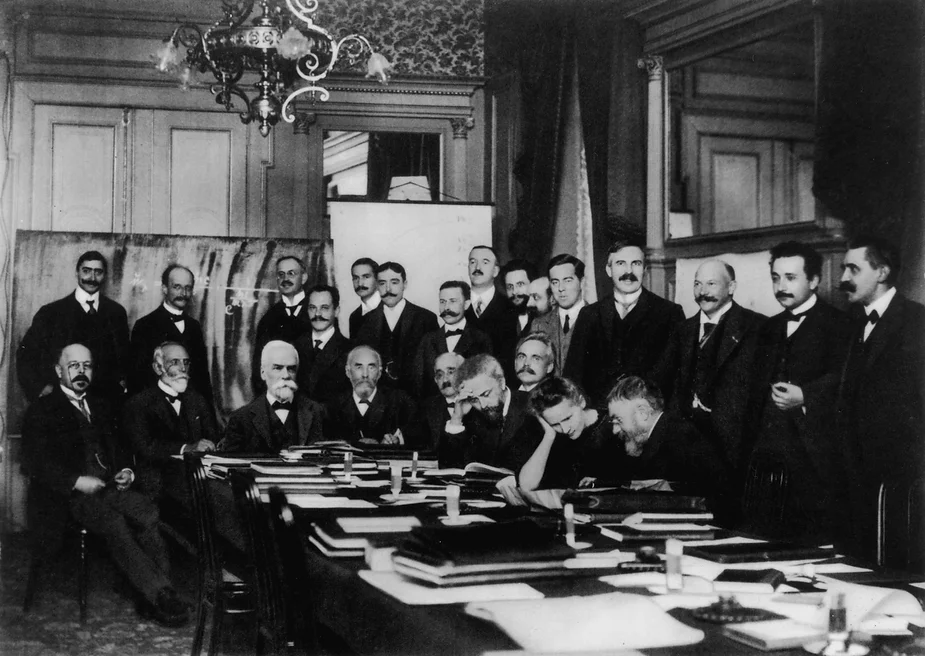ADVERSITIES & ADVERSE EVENTS: INDUSTRY-SHAPING SCIENTIFIC HEROES
In a recent blog I commented on people who were double Nobel Laureates and mentioned one of my scientific heroes Marie Curie. As I remarked at the time, she is the only person to have been awarded a Nobel Prize in two different scientific disciplines, physics and chemistry. I thought that this time I would expand on her achievements, how so much was accomplished in the face of adversity, and then perhaps consider others who have achieved great things despite major obstacles.
My initial interest in Madame Curie was aroused during a stay in the Metropole Hotel in Brussels several years ago. There was a photograph of the first Solvay Conference of 1911; such conferences were started to review unsolved issues in physics and chemistry, and after this initial invitation only meeting, continue to the present day. The photograph of this first meeting, which shows Madame Curie surrounded by a group of 25 mostly elderly gentlemen, is a gathering of some of the greatest names in science of that time: Einstein, Planck, Lorentz, Rutherford and Lindemann amongst others.

At that time, women in the sciences were relatively uncommon, and her presence at the Solvay Conference represented a truly impressive achievement. Despite experiencing prejudice as a foreigner, she became a French citizen following her marriage to Pierre Curie, the first woman to be a professor at the University of Paris, the first female Nobel Laureate and, as stated above, the first to be awarded two Nobel prizes in different scientific disciplines. Her talents were obviously passed on through her family as in addition to Pierre, her daughter and son-in-law, the Jolit-Curies, were jointly awarded the 1935 Nobel prize in chemistry and her other son-in-law Henri Labouisse received the Nobel Peace Prize in his role as director of UNICEF.
What about others who overcame adversity to achieve greatness in their fields? The most obvious in our era would be Stephen Hawking. His story is too well known through his writings and the films of his life to need amplification here, but is still inspiring to a high degree.
However, not all those who overcome adversities to achieve great things are as widely known as Madame Curie and Stephen Hawking. In our own field of drug safety, one man exemplifies achievement against the odds; Professor William Inman. Known to all as Bill, he was a promising athlete at school before going up to Cambridge to study medicine, but just before he started his clinical training, he contracted polio. It was two years, much of it spent in an iron lung, before he returned to Cambridge. He was given special tuition there and became the first clinical graduate in 1956 (at that time Cambridge students usually went to London hospitals to complete their training), delivering 50 babies from his adapted wheelchair. Some three years later he joined ICI as a medical adviser and then the UK Department of Health and Social Security as Senior Medical Officer. He was then invited to join the Committee on the Safety of Drugs where he developed the now famous yellow card system for the reporting of adverse events. Inman's subsequent work on the relationship between the combined oral contraceptive pill and the risks of thrombosis and halothane associated jaundice were ground-breaking examples of the investigation of adverse drug reactions. From the DHSS he established the Drug Safety Research Unit at Southampton University where the system of Prescription Event Monitoring was evolved. As an adviser to the World Health Organisation, he helped establish the WHO Adverse Reaction Terminology and in 1984, was appointed to a chair in Pharmacoepidemiology at the University of Southampton.
Bill was also an accomplished glider pilot, a fly fisherman and the author of two acclaimed memoirs of which Don't Tell the Patient - Behind the Drug Safety Net is an excellent account of his times in drug safety.
It's difficult to wonder how much adversity contributed to these wonderful careers but they stand as examples to us all. In our own field, there is no doubt in my mind of the debt we owe to Bill Inman in developing our speciality and advancing patient safety worldwide.
